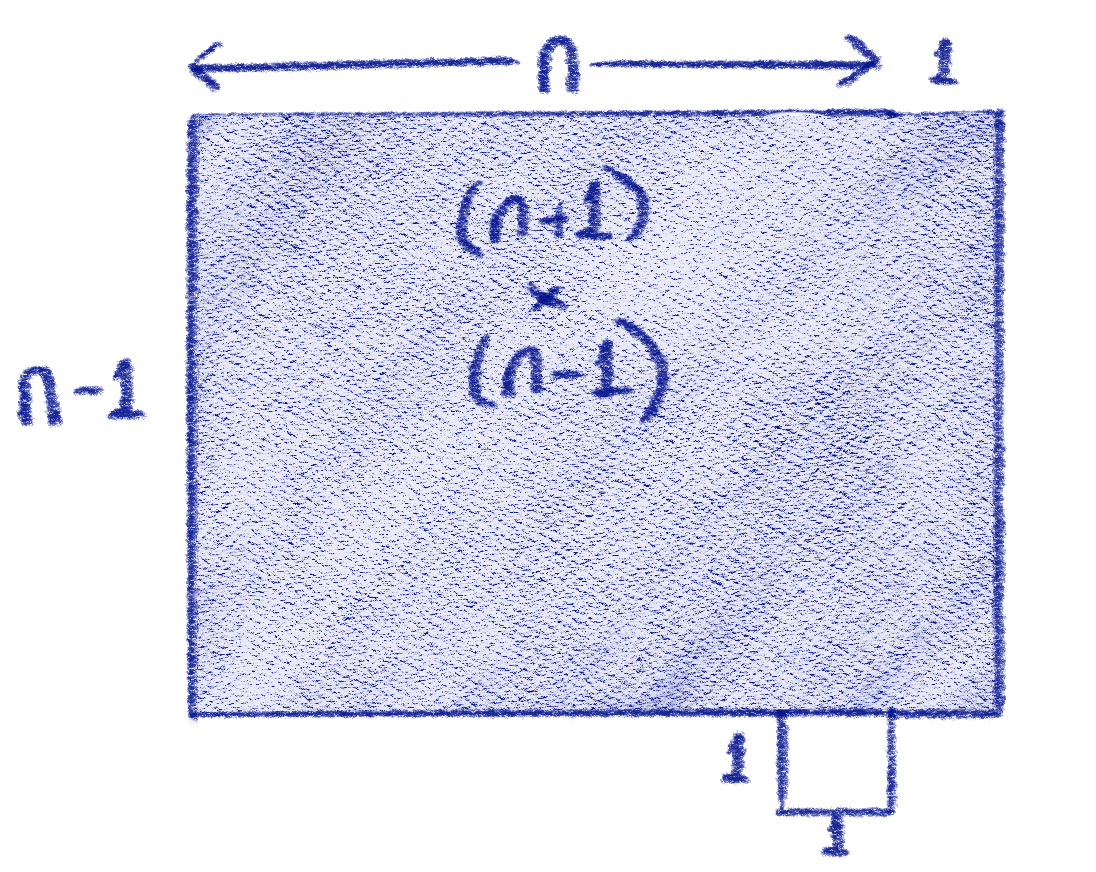Arithmetic Tricks - Squaring
This is a post about arithmetic tricks. I know that things called calculators exist, but it is really good to develop mental tricks as this means you don’t rely on a calculator, and can get a sense for when a result seems ‘off’:
If you ever have to multiply a number by itself, this is called squaring.
So 2 × 2 = 4, or 2² = 4
It is called squaring because if you have a square of side 2, then the area is 2 × 2.
That’s all well and good. But what if we need to find 98²?
Long multiplication
We could work in with long multiplication.
This undoubtedly works, but it doesn’t really sit well - I cannot do it easily without pencil and paper. The numbers are awkward, all those sevens eights…
Is there another method.
Yes.
We can make use of the distributive property of algebra that:
(a + b)² = a² + 2ab + b²
Before I show you how this works, let’s look at where it comes from?
Diagram to show distribution of terms
Imagine a square of side length a+b. Its area is (a + b)².
This is made up of four smaller areas. A square of length a, area a². A square of length b, area b² and finally two rectangles, of side length a and b, area ab, this gives a total area of 2ab for the rectangles.
Adding this all together, we should see that:
(a + b)² = a² + 2ab + b².
We can use this by noting that 98 = (90 + 8)
So 98² = (90 + 8)² = 90² + 2 × 90 × 8 + 8²
Thus 98² = 8100 + 2 × 720 + 64 = 8100 + 1440 + 64 = 9604
This is exactly what we had before, what’s the gain?
Firstly, I have a mental diagram that I can use to keep track of things, there is the big square, 8100, two rectangles - twice 720, and a small square, 64.
Also, I can make by 98 in other ways, remembering that (-2)² is positive, we get:
98² = (100-2)² = 10000 - 2 × 2 × 100 + 4 = 10000 - 400 + 4 = 9604
In my head, I am saying 100 squared is 10000. Modify that by knocking off two rectangles of sides 2 and 100 (-2 × 100) twice, then as these rectangles overlap, I’ve taken the corner square off twice, add one corner square back in (-2 × -2).
With practice, this can allow us to quickly square numbers, if we can see a convenient way to divide them up. Writing it out in full, as I have to in order to demonstrate, makes it seem like more work - but by making the numbers easier to work with, I find I can (usually) hold it all in my head more reliably.
57² = (50 + 7)²
57² = 2500 + 2 × 7 × 50 + 49
57² = 2500 + 100 × 7 + 49 = 3249
Or we could say:
57² = (60 - 3)²
57² = 3500 - 2 × 3 × 60 + 9
57² = 3600 - 6 × 60 +9
57² = 3600 - 360 + 9 (I find subtracting 360 a bit awkward, so in my head I subtract 400 and add 40)
57² = 3600 - 400 + 40 +9 = 3249
Let’s do another example. 123² = (120 + 3)² = 14400 + 720 + 9 = 15129
The skill is in being able to identify how to break up the starting number into things that are easy. It is helpful to know some squares by heart, such as 5² = 25 or 11² = 121
Caveat
The thing with the ‘methods you learn at school’ is they are reliable, they always work. Mental arithmetic tricks sometimes provide a shortcut, sometimes they’re making life more difficult. They are tools that only help in certain situations, and the skill is recognising when you have such a situation and the flexibility to take advantage.
Recent Arithmetic Posts
All Maths posts






